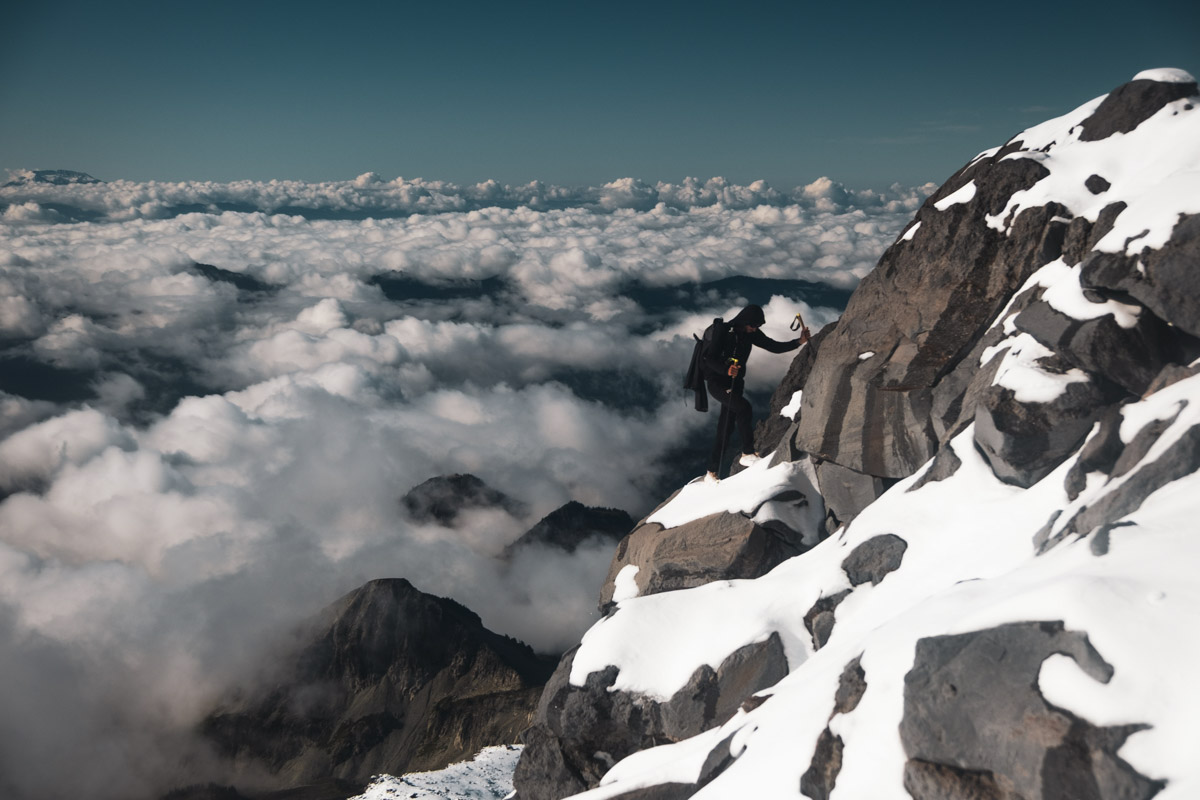On October 4, 2025, Kilian Jornet completed his month-long States of Elevation project, linking up 72 mountains above 14,000 feet throughout the states of Colorado, California, and Washington, all under his own power. These mountains, commonly referred to as 14ers, are highly sought-after summits by peak baggers, and many people spend a lifetime trying to climb them all. In the end, after 31 days of movement, Jornet covered 5,145 kilometers (3,197 miles) and climbed 123,045 meters (403,690 feet), and summited all but two of the 14ers in the U.S.’s lower 48 states, skipping two located on private land in Colorado.
Along the way, Jornet completed several iconic lines, including the LA Freeway, the Elks Traverse, and Nolan’s 14. He also set a new fastest known time (FKT) on Norman’s 13, a line linking 13 of the 15 Californian 14ers in the Sierra Nevada together in one line. This human-powered project mirrors two similar projects Jornet completed in recent years — one in the Pyrenees in 2023 and his Alpine Connections in the Alps in 2024, both of which he used a bicycle to link up a series of high and technical peaks.
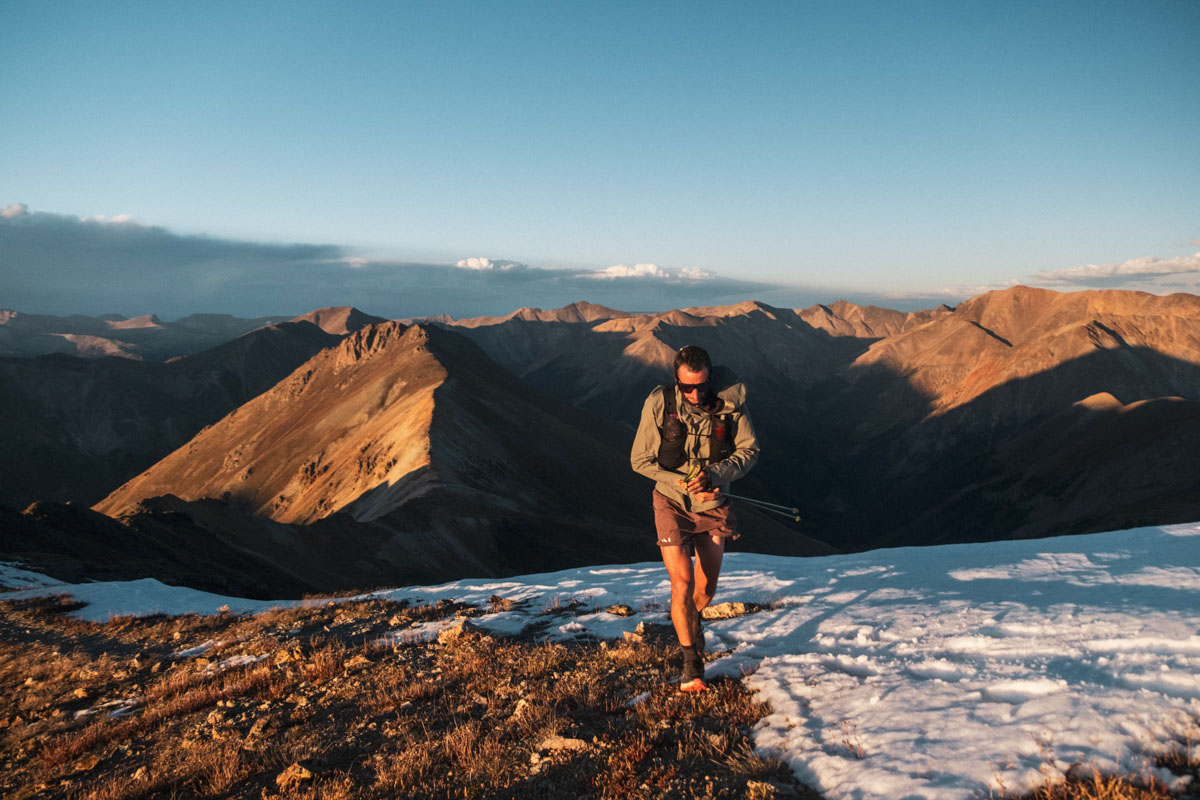
Jornet tops out Handies Peak at sunset midway through his States of Elevation Project. It’s a spot he knows well from his five wins at the Hardrock 100. Photo: Nick Danielson
This project comes as Jornet’s second trip to the U.S. this year after he placed third at the 2025 Western States 100 this past June. Jornet, arguably the best ultrarunner of this generation, has won UTMB four times, the Hardrock 100 five times, and the Zegama Marathon 11 times. Over his lengthy career, Jornet has regularly undertaken non-racing adventures and projects around the world, and he announced States of Elevation in early August 2025.
Jornet started his journey on September 3 by climbing Longs Peak in northern Colorado. Over the next 16 days, he climbed 56 of the 58 14ers in the state, covering 1,943 kilometers (1,207 miles) and 78,004 meters (255,900 feet) of elevation. While not going for any sort of official FKT, Jornet only allowed himself 4.5 hours of sleep per night throughout the Colorado section of the project. Jornet’s project was similar to that of Justin Simoni and Joe Grant, who previously linked all of Colorado’s 14ers by bike in 2014 and 2018, respectively. While Simoni and Grant completed their projects in self-supported fashion, meaning they returned to their bikes where they left them after each summit and found their own food and shelter, Jornet was assisted by a small team providing logistical support.
Throughout the project, he was joined by the who’s who of U.S. trail running, mountaineering, and cycling, including iRunFar’s own Bryon Powell and Meghan Hicks, who joined him in Colorado’s San Juan Mountains. After finishing the project, he said that the companionship was part of what made the trip special: “I’ve been amazed by the wild nature, the wildlife, and how much the landscapes change. I loved doing it by my own means, but also being joined at times by friends who came to share a moment and show me their home. I’m really happy with how the project has gone.”
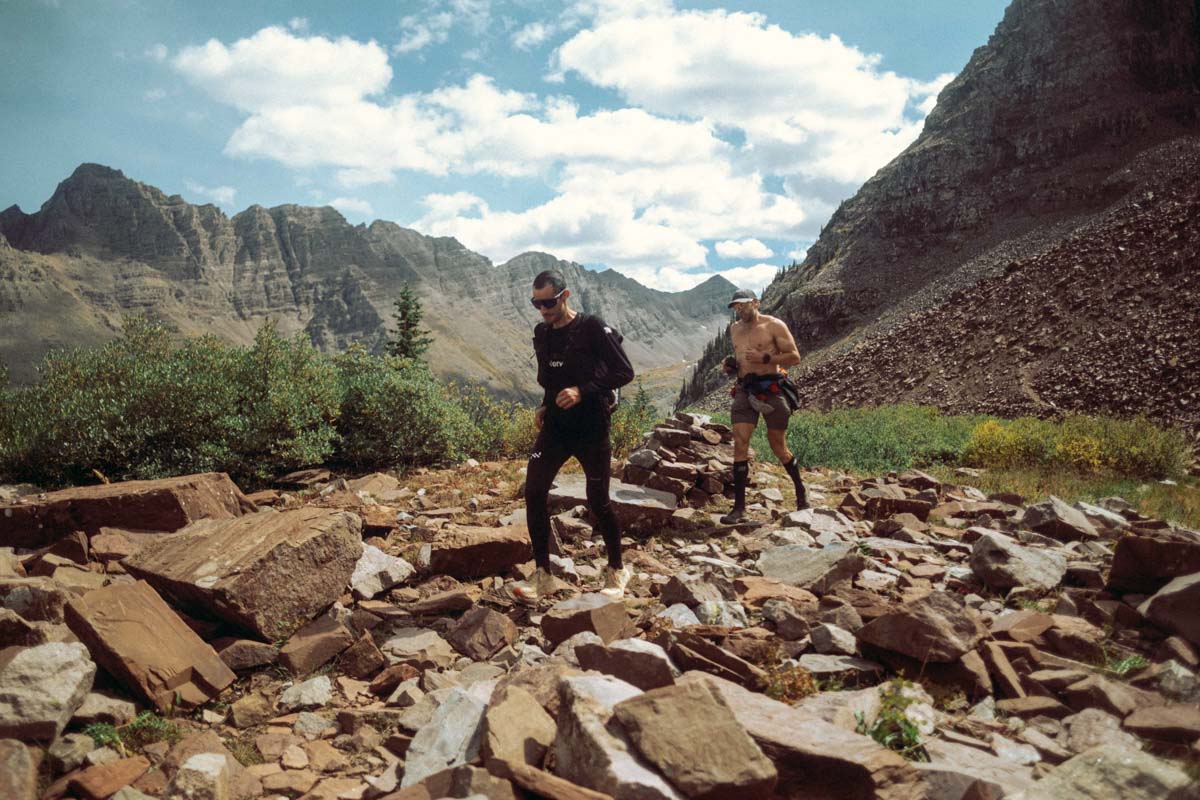
Jornet was accompanied by many runners on route. In this photo, Olympian Ryan Hall is with Jornet in Colorado’s Elk Mountains. Photo: Nick Danielson
The weather during the Colorado segment proved challenging. After finishing the mountains in the state and setting his sights on the long pedal across the desert to California, Jornet said, “During the first two weeks the weather was really tough, which added an extra layer of challenge. The first week I felt terrible — probably because of the jet lag and the altitude — but then I started to feel better and better, even if the weather kept being difficult. In those first two weeks we only had three days of sun, which made things harder.”
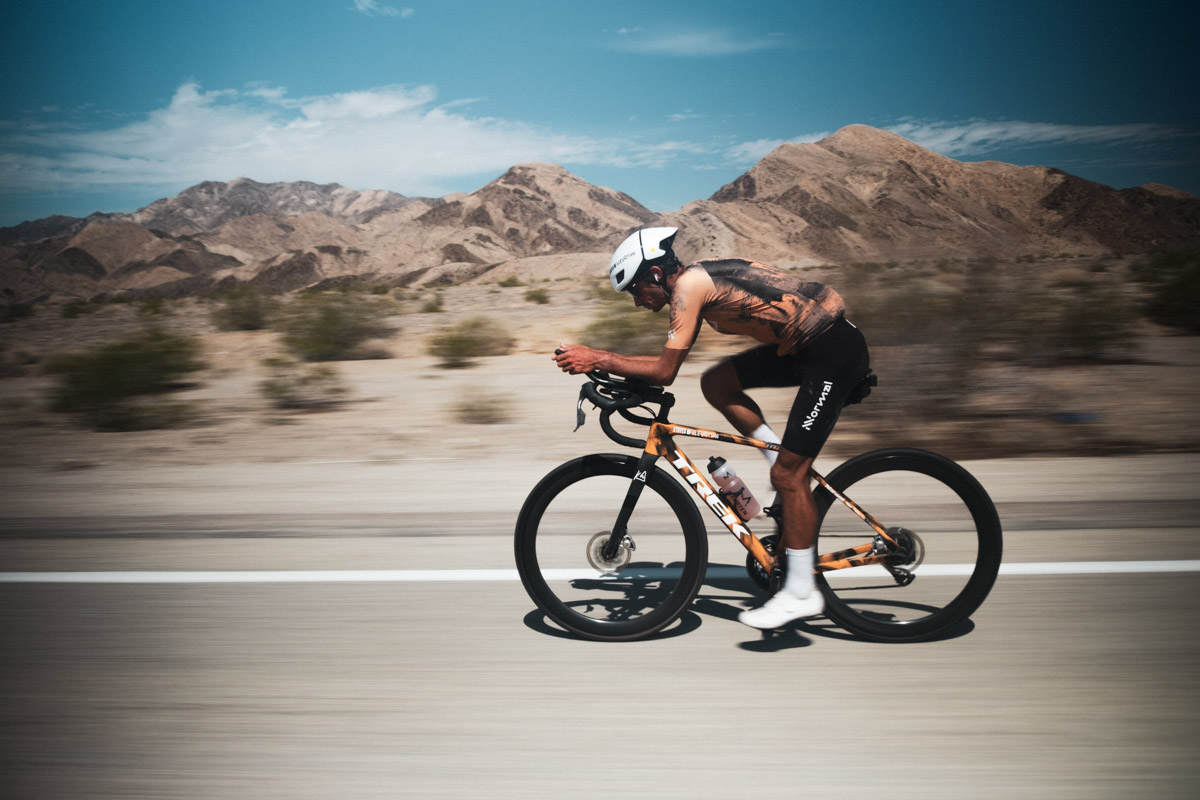
Jornet gets aero while riding across the desert between Colorado and California. Photo: Nick Danielson
From Colorado, Jornet cycled across several states over the course of several days to the California Sierra Nevada, where he ticked off the 13 peaks in the range via the Norman’s 13 line. The Sierra Nevada 14ers are in two distinct clusters linked by the John Muir Trail, and the route connecting them all involves some low fifth-class scrambling, something Jornet is more than adept at.
Jornet said that he thoroughly enjoyed his time in the Sierra Nevada: “Norman’s 13 has been one of the highlights of my trip. The terrain is incredible for mountaineering, with endless wilderness, the beautiful John Muir Trail, colorful lakes, and forests that make you feel immersed in nature.” While the FKT wasn’t originally the plan, Jornet found that he was moving quickly on the terrain and said, “It’s been long, technical, and fun — and honestly, I haven’t thought much about the FKT. When scouting, I saw there were possibilities to move fast, but I wasn’t sure how I’d feel after so many days of activity. To see that, after 23 days, I can still move quickly — it feels good.”
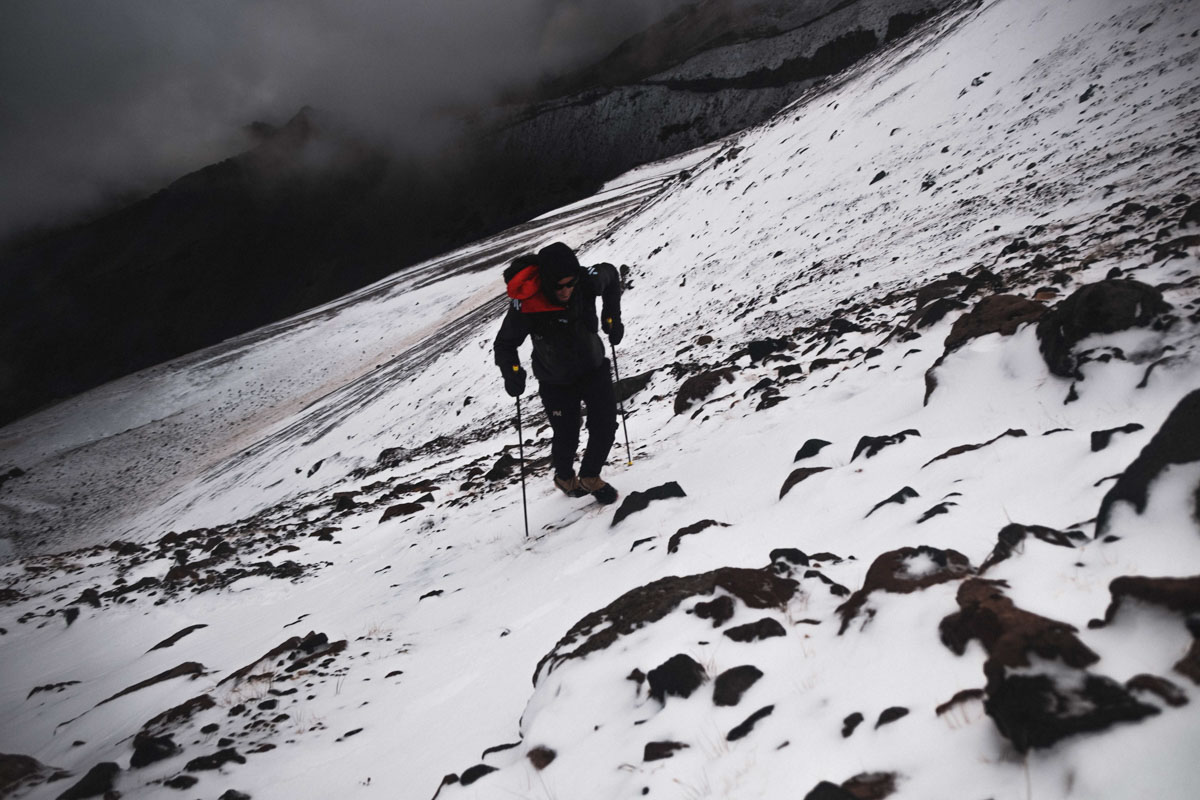
Jornet ascends the snowy slopes of Mount Shasta in California. Afterward, Jornet said this was one of the windiest summits he’s ever had. Photo: Nick Danielson
From there, Jornet headed north to White Mountain Peak and Mount Shasta before riding to Washington state to complete his last summit, Mount Rainier.
Afterward, Jornet said, “I’m really happy to have made it this far. When I started this project, it was just an idea on a map — something I thought could be great, but I didn’t know if it would be possible. Now I see that it was, and beyond the numbers, it’s been a true adventure — a way to discover places that have become very special to me.”
